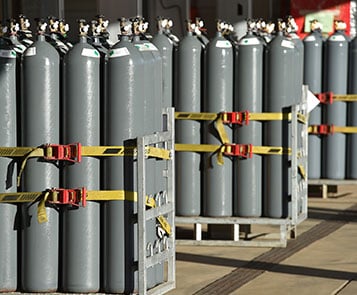Is Compliance Worth It? New OSHA Fines Point Even More Urgently Towards “Yes”
Many businesses view the issue of compliance as merely a nuisance, and the fines that result simply as the cost of doing business. However, in a couple of weeks, this “cost of doing business” is going to nearly double, thanks to a new regulation put in place by President Obama last November. The new rule, technically referred to as the “Federal Civil Penalties Inflation Adjustment Act Improvements Act of 2015” allows OSHA to increase fines in keeping up with the rate of inflation. Even though annual inflation may only be 2% or so, OSHA hasn’t been able to raise their fines since 1990, so the organization is now catching up to the current value of the dollar to the tune of a 78% penalty increase, effective August 1. That said, let’s look at the age-old question, “Is compliance worth it?” a little more closely.
The New Rates
The breakdown for the new penalties will be the same as before, only all of the maximum penalties will be increased by 78%, and, presumably, the lesser fines in each category will increase in a similar manner. That means that, for companies that willfully or repeatedly break OSHA’s rules will be subject to a whopping $124,709 fine per violation. This fine could be issued for things like forgoing essential safety training for your employees or failure to implement a proper emergency response plan. Even if you were cited four years ago, if OSHA issues another citation for a similar offense, you could bear the brunt of such a fine.
|
Type of Violation |
Current Maximum Penalty |
New Maximum Penalty |
|
Serious |
$7,000 per violation |
$12,471 per violation |
|
Failure to Abate |
$7,000 per day beyond the abatement date |
$12,471 per day beyond the abatement date |
|
Willful or Repeated |
$70,000 per violation |
$124,709 per violation |
What This Means for Business
For companies that stay up-to-date on their compliance-related issues, these fines are nothing more than OSHA raising the stakes and an extra reminder to play by the rules. However, for those enterprises who simply paid the fines every year, business just got a lot more expensive. Though OSHA makes case-by-case concessions for smaller businesses so that these new fines don’t bankrupt smaller companies, the fact remains that noncompliance just got a lot more expensive for everyone. Unlike most new OSHA rules that only change what’s in the rulebooks and little on the production floor, this new rule can be the difference between compliance and having to lay off employees or forgo advancing your business goals.
Another new stipulation put forth by the new rule is that this current fine increase isn’t limited to August 1, 2016. OSHA now has the power to raise these fines each year in accordance with the Consumer Price Index, meaning noncompliance is never going to get any cheaper.
All of this said, if your strategy prior to these fine increases was that it’s simply more cost-effective to forgo compliance in favor of paying the fine each year, then your logic might be in for a rude awakening. On the contrary, now may be a better time than ever to make a one-time investment in compliance in order to save thousands down the road. Click below to watch a recorded webinar on what to do when OSHA comes knocking.







.png)